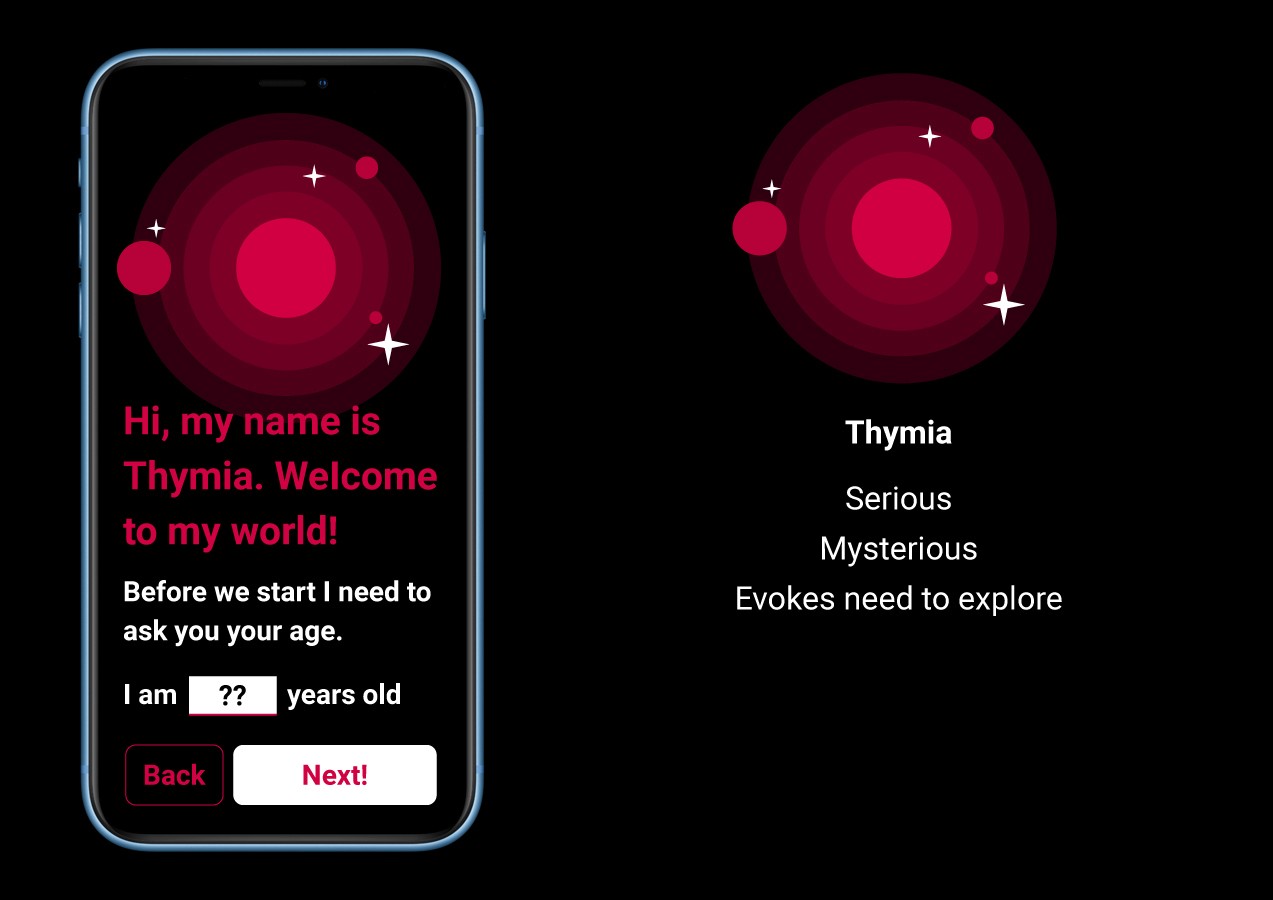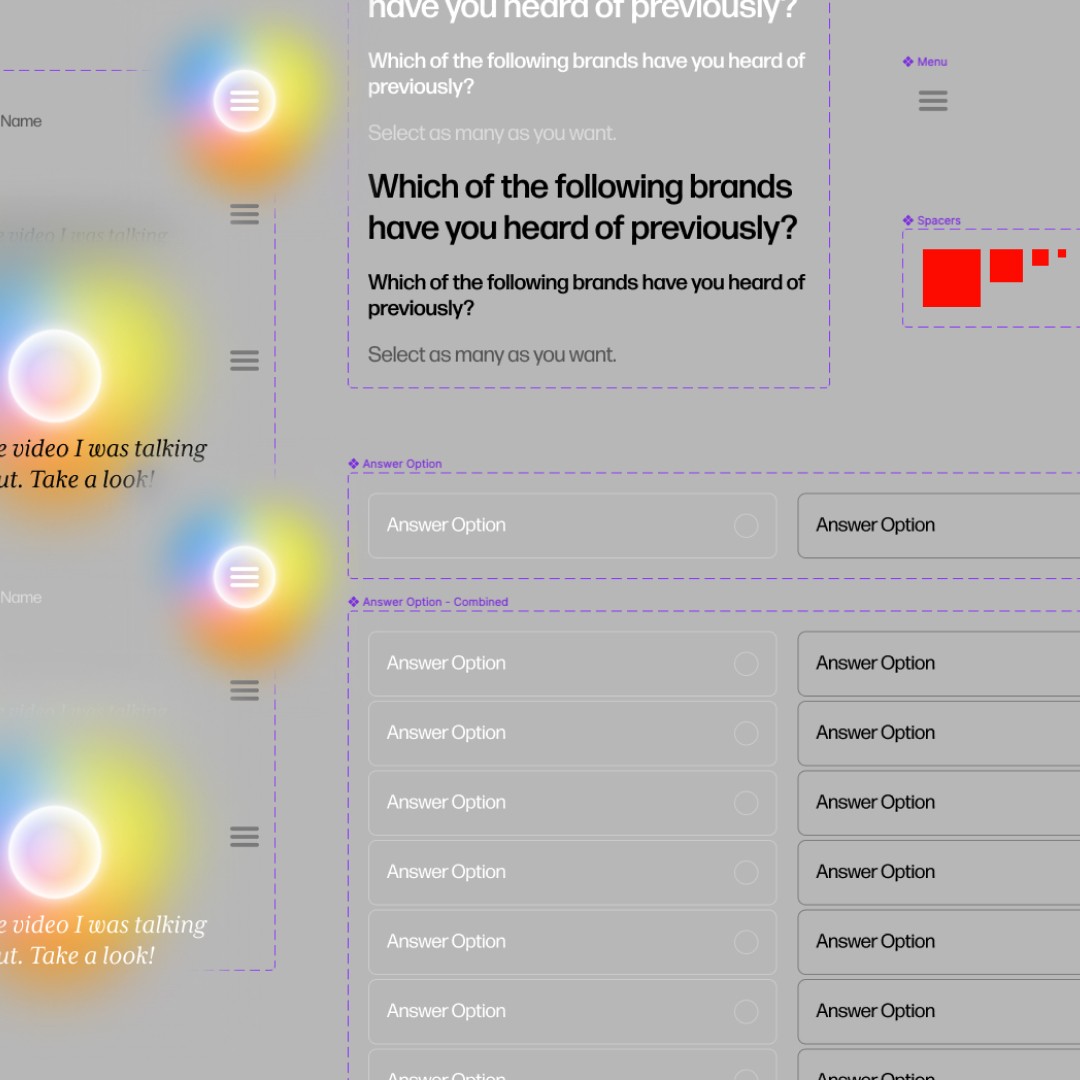Unveiling the future of market research: Conversation Design
Work for
Epiphany RBC
My Role
Project Lead, Service & Product Design
My Team
As this is a complex project, the team included multiple disciplines as well as the management team. Other members included research consultants, design thinking university professors, developers and 3 designers.
Project User Base
Hundreds-of-thousands / year globally
The Challenge
Identifying the future of market research
Epiphany is a research based consultancy leader. Epiphany essentially helps global organisations like Bayer, Generali, CPW and IKEA reduce risk in their strategic decisions. How does Epiphany know the answer? Through market research. This project was all about identifying the future of market research. How does it look like? How would consumers communicate with organisations in the future? How would Epiphany be able to reach out to consumers at the place and time of their preference? These are the question this project answers.
Currently consumers join surveys to fill up their time. But how would it look if consumers wanted to join the conversation and cocreate the future with Epiphany. What a vision!
Market research status quo
Driving the design thinking double diamond a step further!
As a first step we identified the current status of market research as an industry. Our research showed really dissapointing results. The current status of market research is suffering. It is suffering from bad and unpolished user experience, it is suffering from bad copywriting and not following the best practices of research according to literature but above all, it is suffering in really getting to the why behind consumer decisions. Most surveys can only get to the what behind consumer desicions but getting to the why prooved to be the the holy grail of market research.
Stakeholder & usability interviews
The human element
We interviewed stakeholders like product owners, consultants and management team members to understand their challenges with the current market research tool. At the same time we interviewed consumers to understand what would be important for them when filling out digital surveys. We developed our own scorring systemt to be able to identify reocurring issues, patterns and potentially hints for solutions and opportunities.
The holy grail of market research: Discovering the why behind consumer decisions.
The opportunity space
The holy grail of market research: the WHY behind consumer decision making
When talking with a friend, it's normally easy to get to the why behind a decision. You have their trust, you possibly have been through a lot together. Maybe you grew up together. But in a survey consumers might not trust the system enough to share. And on the other hand the system might not be clever enought to ask! So to get to the WHY behind consumer desicions we needed two ingredients. A. A system clever enought to be able to challenge, ask and undestand and B. A user or rather consumer that feels comfortable enought to share ideas, thoughts and feelings.
The process of exploring the opportunity space
A good answer is never straightforward
Idea generation. How should we do that? How do we go about it? Well, we invented our own way. We needed a way to be able to generate as many single and drafty ideas at a time as possible. Why single? Because we would map them and later combine them so single ideas was the only thing that made sense at this point. Why drafty? Because this was all about exploring as many ideas as possible. And so we created drafty storyboards. Some of them crazy, some of them inspiring, some of them trying to challenge us (and the team's engineers 😅). Then we had to map them in multiple 2 dimentional graphs so we can see where ideas converge and where we would need to explore more.
A direction is born
The common denominator
Most of the ideas were assuming a moderator, essentially some kind of existence or presence that is there to guide the consumers. It all came together and it all made sense. Why? Because tranditional market research is based arround a moderator. The person who manages the roundtable discussion, asks the questions, helps when needed. What if we tried for a moment to imaging getting inspired by the traditional to drive our idea further?
Lisa, the moderator
And that's how Lisa was born - essentially throught the need to connect and ask questions that make sense. Lisa is a clever being free of form and preconceptions. We figured out for example women are more likely to be open about sensitive information with other women and potentially men with other men. So we needed a moderator that is free of genre, age, race or other characteristics. And that's why we went for a bulb or light presence. Light, throught different religions and traditions means knowledge and god-like qualities. That is our Lisa, an all-knowing, all present, guiding and helpful existence.
Other Moderator Explorations
Before arriving to Lisa we explored and tested multiple different moderation variations. For the reasons mentioned about, Lisa won but here are some examples of other "moderators" we experimented with.



Getting the timing and place right
Asking a question when it matters the most
People answer questons based on how they feel and think at each and every moment. We found that the best point to ask a question is close to the decision making moment. So for example if we would want to ask a consumer questions about a cereal box they bought, the answers would be much more valuable if the question is asked whithin the supermarket and preferably at the time they decid to buy the product. That insight gave us a good challenge! We need to have a system clever enought to identify the right place and time to ask a question. That way of thinking informed our notification system!
A future-proof concept and a future-proof design system
3 actors: the user, the moderator and the survey
3 actors, 3 focus areas, 3 different teams to drive the envelop forward. That's what's inspiring about this concept. Each pillar can be separately evolved and further developed. This concept just makes everything so much more interesting. A system based on the connection between 3 subsystems. 3 actors on a stage is a much more interesting concept that 1 actor on a stage. The possibilities are unlimited! We naturally created a design system so the team and future collaborators can follow but also drive the concept further without deviating from the core concept.







